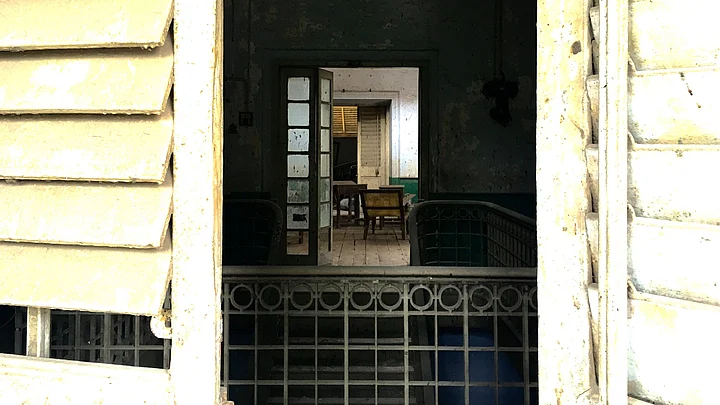Chennai’s EA Mall, is a 70,000 sq ft shoe-box.
Every weekend, each square foot of this featureless structure fills up with with people who give as much importance to its architecture, as a toddler to its bowels.
But, just round the corner, is a piece of history that has braved last December’s rains. It is crumbling, but it’s still there, for anyone who seeks a story in its eerie, yet inviting silence.
Shall we?
The Nawab and Lord Hobart
Nawab Humayun Jah (aka Mubarak Ali Khan II) was the Nawab of Bengal for 14 years. He died when he was 28.
In 1873, Lord Hobart, the then governor of Madras State asked the Nawab for his ‘bungalow’ in Madras, to house a school for Muslim girls. The Nawab readily agreed. And so the Hobart (Govt) School was born. This is where progressive Muslims would send their daughters to study, braving the ire of the society and their own community.
This is probably Nawab Humayun Jah’s only claim to fame. So too with Lord Hobart. And so their stories end here.
But the bungalow itself has more to tell.
Bungalow. Bengalo. Bengal. Ring a bell?
The Bungalow is Bengali
The Bungalow, incidentally, was born in the Bengal Province, the largest colonial base of the British Raj, with it’s capital, or HQ, in Calcutta. At its peak, it extended from Pakistan in the west to Penang (yes, the one near Singapore) in the east.
Typically a single storied building with a large verandah, the British first ‘borrowed’ the buildings from the Indian owners and then took the architectural style overseas.
Even today, the ‘bungalow’ carries connotations of class and exoticism.
Putting the Bhoot in the Bungalow
Dakshinaranjan Mitra Majumder compiled Bengali ghost tales into the book, Thakurmar Jhuli, in 1907. Ghumonto Puri (sleepy mansion), is the second story in the book.
Haunted bungalows by then had been around long enough to be folk tales!
Curiously, almost all of the haunted house stories across cultures and continents involve single-storied bungalow type houses.
When unused or decrepit, or even when not maintained, this form of construction gives room (he he he) to an excess of creaking sounds, odd noises, funny smells, dank spots of oddly-shaped moss, and sudden chills in places where the wind pushes through holes in the wood.
Or, all of the ghost stories might actually be true.
Roman Pillars and Roof Tiles
‘Chajjas‘ are sloped projections from the top of a wall that protect from rain and sun. This is an intrinsic feature of Bengali architecture, and has also been adopted by Akbar in his Bengali Mahal. It gives the entire building a ‘droopy-eyed’ look that makes it more endearing, somehow.
And then there are the pillars in typical, traditional Roman style. Somehow, I’m not a fan of the spit-curls at the top, but I see the appeal.
The Plantation Chair
I spotted this on the first floor. I mention this because this is a praiseworthy achievement, considering my unenviable slipped disk(s) and negligible levels of courage when faced with decrepit bungalows.
But it was worth it. It’s called a ‘Plantation Chair’ and is by far one of the most beautiful and stylish things literally every male ancestor across South India has laid his posterior-to-back-in-a-comfortable-curve on.
Old, Decrepit Schools are Creepy
Fear is a natural instinct that kept my ancestors alive and away from scorpions and hungry tigers and rolling boulders for hundreds of generations. But then there is this unexplained and as yet very little known feeling; creepiness.
This is the uneasy feeling of sudden terror when not faced with something dangerous. This is the feeling that comes when faced with the unknown, or the unfamiliar.
Throughout the shoot, I was on high alert for stray metal edges, and staircases and flooring that could give way at any moment.
But it was the school stuff that made me want to run out screaming.
I don’t know the story behind that solitary rocking horse that’s missing a head.
I don’t know why those desks were all neatly arranged and left to rot.
I don’t know why the library is locked, and yet feels like it opens easy; like all you need to do, is just touch the door and push.
I don’t know. And that creeps me out.
(Vikram Venkateswaran is a freelance writer, TV producer and media consultant. Headings, titles and captions are his kryptonite. He just moved to Chennai and hopes the city likes him and is nice to him.)
(At The Quint, we question everything. Play an active role in shaping our journalism by becoming a member today.)
